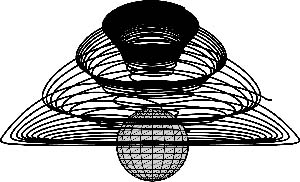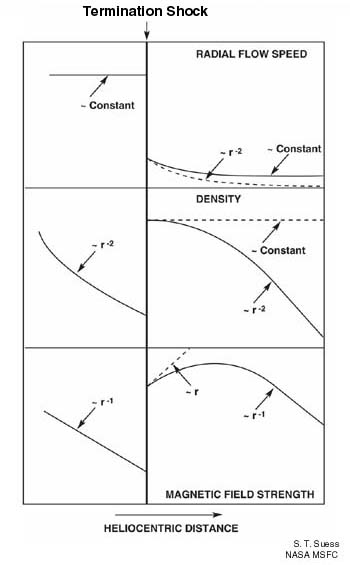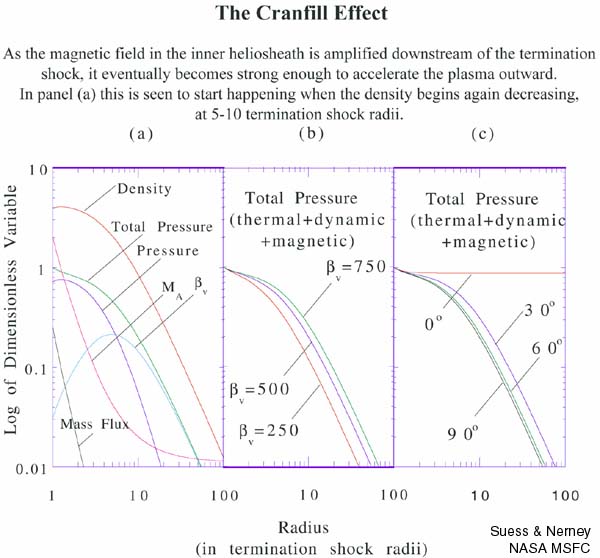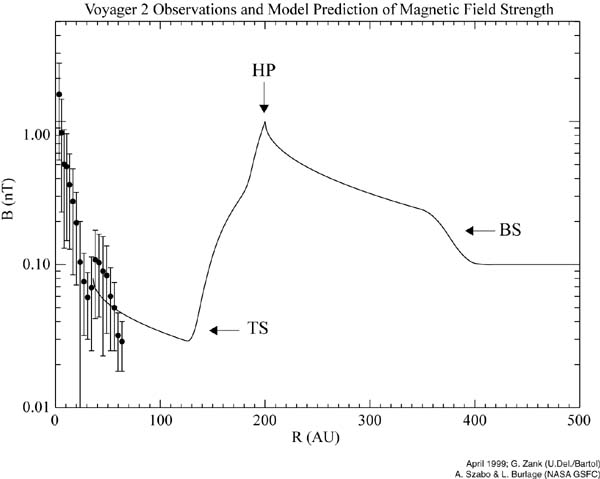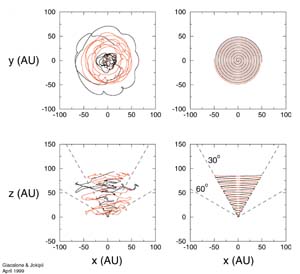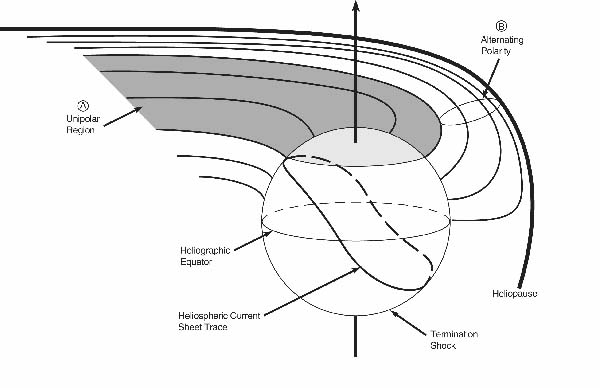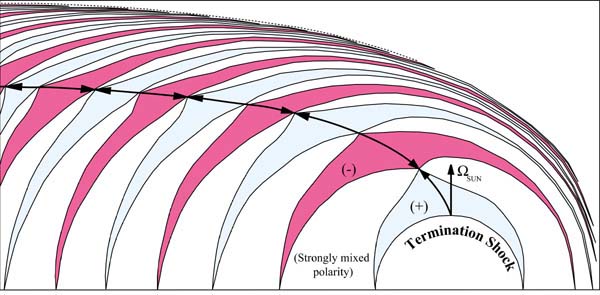The magnetic field is amplified at the termination shock due to the slowing of the solar wind. The wind further slows as it moves outward towards the heliopause.
The field amplification is shown here by the more tightly spiraled magnetic field in the inner heliosheath.
The heliospheric magnetic field is of little dynamical importance throughout most of the heliosphere. But, because of the amplification in the inner heliosheath, it is possible for the field to become strong enough to affect the flow near the stagnation point between the solar wind outflow and the incoming interstellar plasma flow, at the front of the heliopause in the upstream direction. This is called the Cranfill effect.

